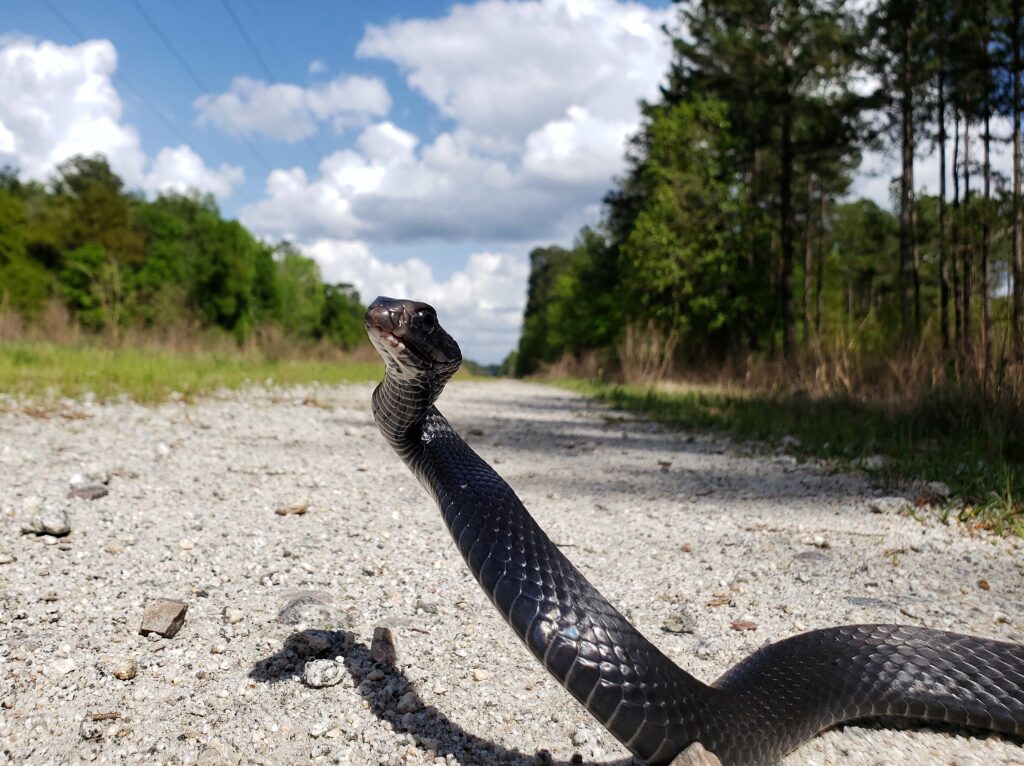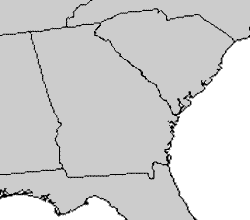Black Racer (Coluber constrictor)
Black Racer (Coluber constrictor)



Description: A relatively large, slender snake reaching up to 152 cm (60 in). Adults are uniformly black with smooth scales, large eyes, and often a white chin. The venter is dark gray to black. They may be confused with other large black snakes such as Rat Snakes, Kingsnakes, Coachwhips, or dark Hognose Snakes, but Racers are more slender, lack keeled scales, and do not have the upturned snout of hognose snakes. Behavior is often diagnostic: while rat snakes, kingsnakes, and hognose snakes tend to freeze when approached, racers usually flee quickly or may strike defensively. Juveniles look entirely different, being tan or gray with reddish-brown blotches down the back. This pattern fades to black at around 30 cm (12 in).
Range and Habitat: Found throughout the eastern United States, from southern Maine to the Florida Keys. In the Southeast, Black Racers occur statewide in Georgia and South Carolina and are among the most common snakes in nearly all habitats. They are habitat generalists but are most abundant in edge habitats such as forest margins, old fields, wetlands, and agricultural areas.
Habits: Diurnal and highly active, racers rely on vision to hunt and are often observed foraging in daylight. At night or during cool weather, they shelter in burrows, stumps, or under cover objects. Agile and fast-moving, they primarily flee when disturbed but will strike readily if cornered. They are capable climbers and sometimes roost in shrubs or small trees at night. Diet is broad, including insects, lizards, snakes, birds, rodents, and amphibians, which are swallowed alive without constriction. Predators include birds of prey, mammals, kingsnakes, and larger racers. Breeding occurs in spring, with females laying up to 36 eggs in early summer. Eggs hatch in late summer to fall.
Conservation Status: Common and widespread. Not protected across most of its range, though protected in Georgia.


